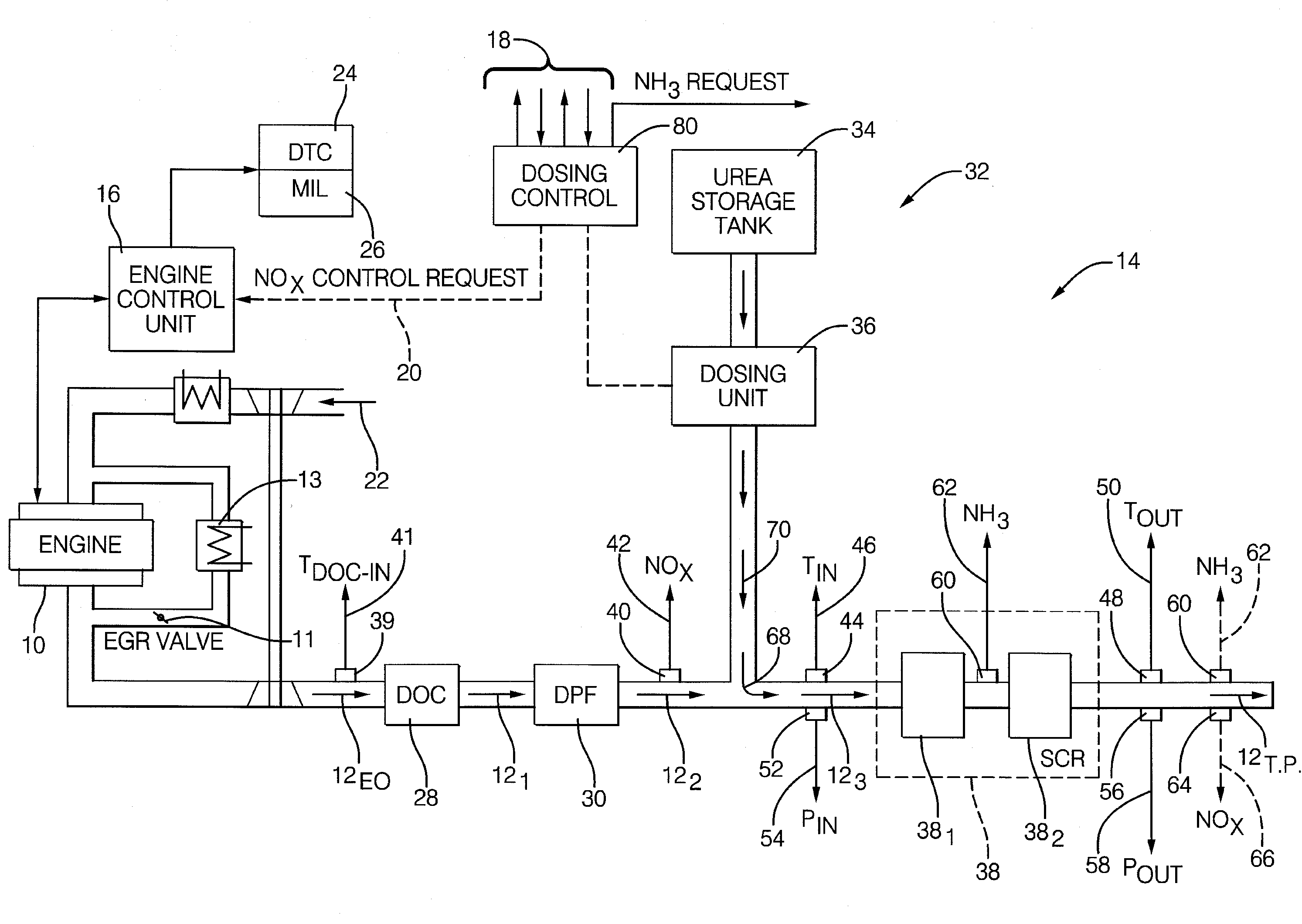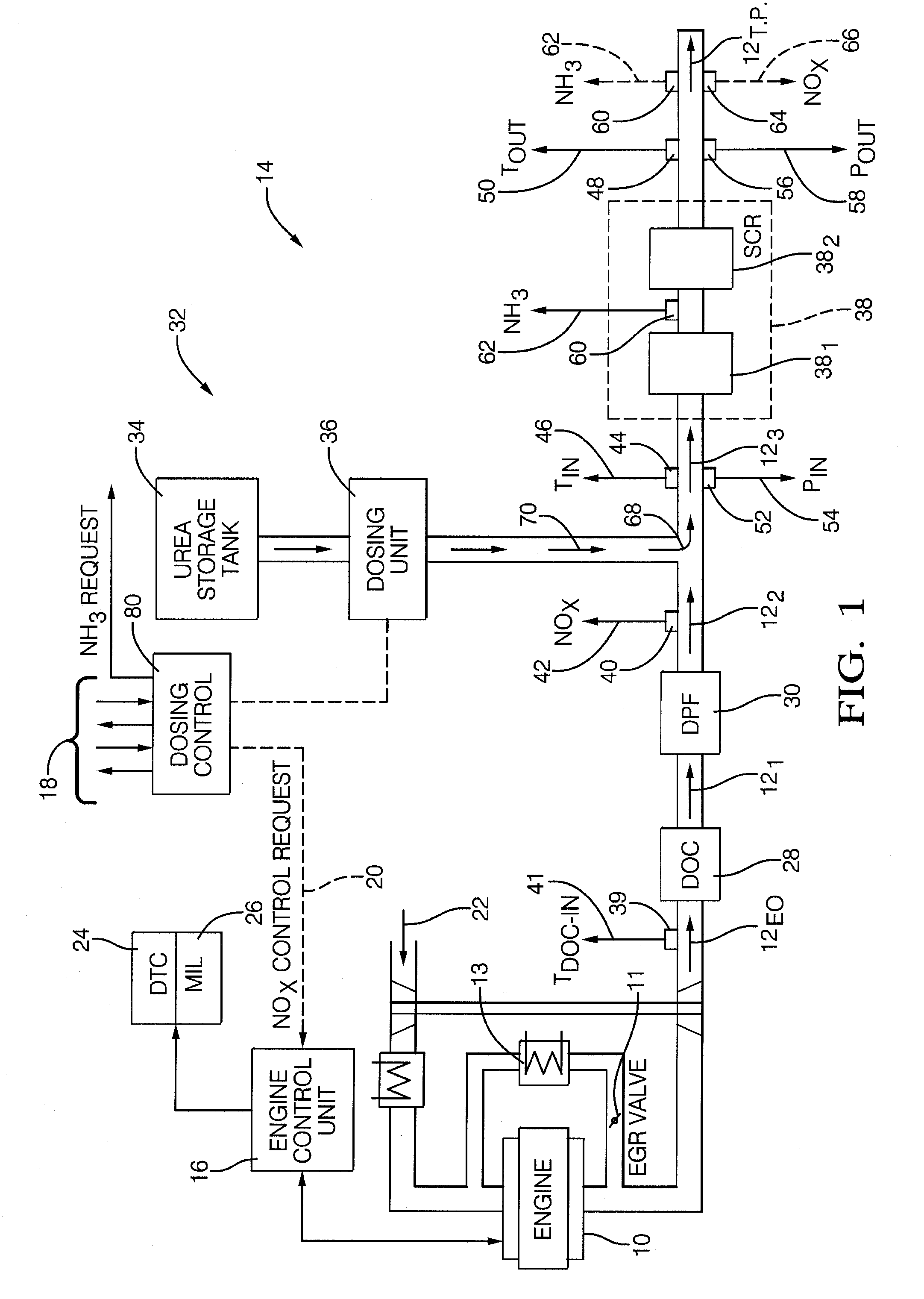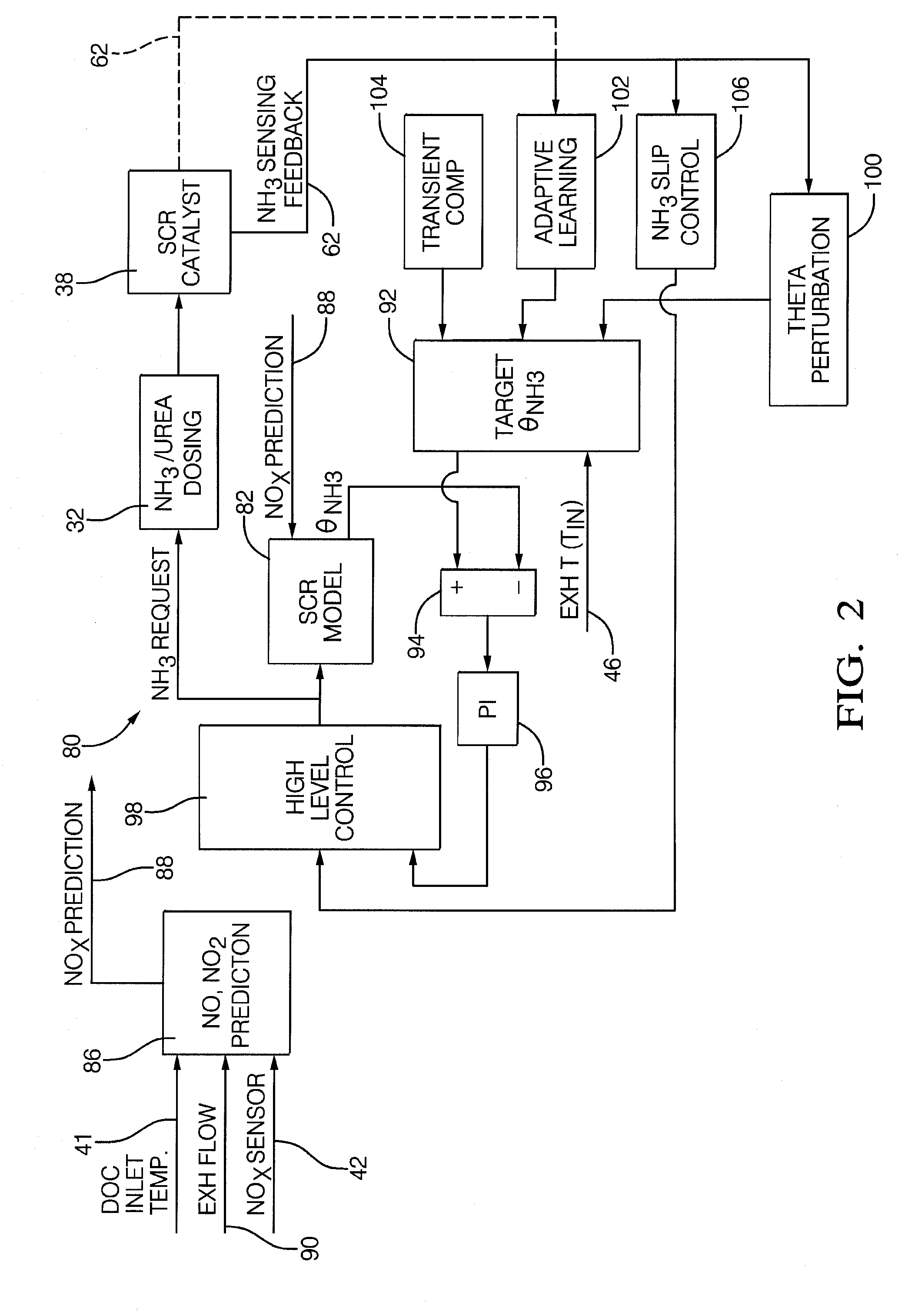NOx CONTROL REQUEST FOR NH3 STORAGE CONTROL
a storage control and control request technology, applied in the direction of exhaust gas treatment electric control, machines/engines, mechanical equipment, etc., can solve the problems of nhsub>3/sub>slip, inadequacies in emissions reduction, and inability to regulate conventional controls, etc., to reduce nh3 slip
- Summary
- Abstract
- Description
- Claims
- Application Information
AI Technical Summary
Benefits of technology
Problems solved by technology
Method used
Image
Examples
Embodiment Construction
[0015]Referring now to the drawings wherein like reference numerals are used to identify identical components in the various views, FIG. 1 is a diagrammatic and block diagram showing an exemplary diesel cycle internal combustion engine system 10 whose combustion exhaust gas 12 is fed to a selective catalytic reduction (SCR) based exhaust gas treatment system 14. The exhaust gas is represented as a stream flowing through the exhaust gas treatment system 14 and is shown as a series of arrows designated 12EO (engine out), 121, 122, 123 and 12TP (tail pipe). It should be understood that while the invention will be described in connection with an automotive vehicle (i.e., mobile) embodiment, the invention may find useful application in stationary applications as well. In addition, embodiments of the invention may be used in heavy-duty applications (e.g., highway tractors, trucks and the like) as well as light-duty applications (e.g., passenger cars). Moreover, embodiments of the inventio...
PUM
 Login to View More
Login to View More Abstract
Description
Claims
Application Information
 Login to View More
Login to View More - R&D
- Intellectual Property
- Life Sciences
- Materials
- Tech Scout
- Unparalleled Data Quality
- Higher Quality Content
- 60% Fewer Hallucinations
Browse by: Latest US Patents, China's latest patents, Technical Efficacy Thesaurus, Application Domain, Technology Topic, Popular Technical Reports.
© 2025 PatSnap. All rights reserved.Legal|Privacy policy|Modern Slavery Act Transparency Statement|Sitemap|About US| Contact US: help@patsnap.com



